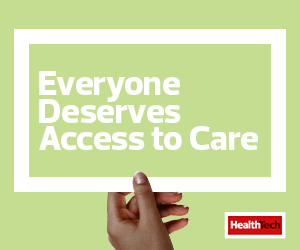Moving Toward Secure Virtual Care
Healthcare systems rushed to move much of their operations to a virtual care model when widespread pandemic restrictions hit the U.S. in March 2020. When federal waivers made it easier to adopt videoconferencing solutions for telehealth, access seemed to take priority over security. However, with sensitive patient information on the line, healthcare organizations turned to platforms that provided key safety features and better workflow integration.
Though Phoenix Children’s Hospital in Arizona implemented Zoom for telehealth before the pandemic, like many hospital systems, it still had to rapidly expand its offerings. “First and foremost, the platform had to be secure and compliant,” David Higginson, executive vice president and chief innovation officer at Phoenix Children’s, tells HealthTech.
The hospital largely relies on key Zoom features, such as password generation, to ensure secure sessions with patients. “The security in the platform itself was surprisingly robust,” Higginson says.
DIVE DEEPER: Find out telehealth’s benefits for patient-centered care.
Before the pandemic, he added, one family had to travel across the state three times a week for appointments. Now, 75 percent of that family’s appointments are virtual. The patient’s mother told the hospital staff, “We got our life back.”
At the height of the heath crisis last year, Rapid City, S.D.-based Monument Health conducted 600 to 800 telehealth visits each day, accounting for the majority of all outpatient visits. The organization is now transitioning to Microsoft Teams after its initial rollout success, which will provide better integration with Monument Health’s electronic health records system.
“Early on in the pandemic, people were using platforms that were not necessarily confirmed to be HIPAA-compliant,” Dr. Stephanie Lahr, chief medical information officer for Monument Health, tells HealthTech. “I totally get why people were doing that; we were all looking for fast and easy. But because we went with a solution that had encryption and authentication built in, we knew we were meeting our compliance burden.”
Keeping an Eye on Regulations
The federal waivers first enacted last year allowed U.S. healthcare systems to quickly respond to the pandemic, and it was a game changer for virtual care. The authorization is expected to last through the end of 2021.
When full HIPAA compliance enforcement returns, healthcare organizations need to be prepared ahead of time so that they’re not caught off guard. But if a longer-term solution has not been reached when authorization ends, it could lead to a “telehealth cliff,” with a major regression in virtual care usage.
In April, Congress saw the reintroduction of the CONNECT for Health Act of 2021, signaling some sustained interest in expanding telehealth coverage beyond the pandemic. The removal of originating site restrictions from Medicare guidelines on a permanent basis would help virtual care expansion.
Policymakers are also re-evaluating the lack of standardized reimbursement policies around telehealth, which has prevented its widespread use in previous years. If Medicare makes long-term changes on telehealth reimbursement, it will permeate through the private payer industry, says Elliott Wilson, director of virtual care for CDW Healthcare, in a recent MonITor blog post.













